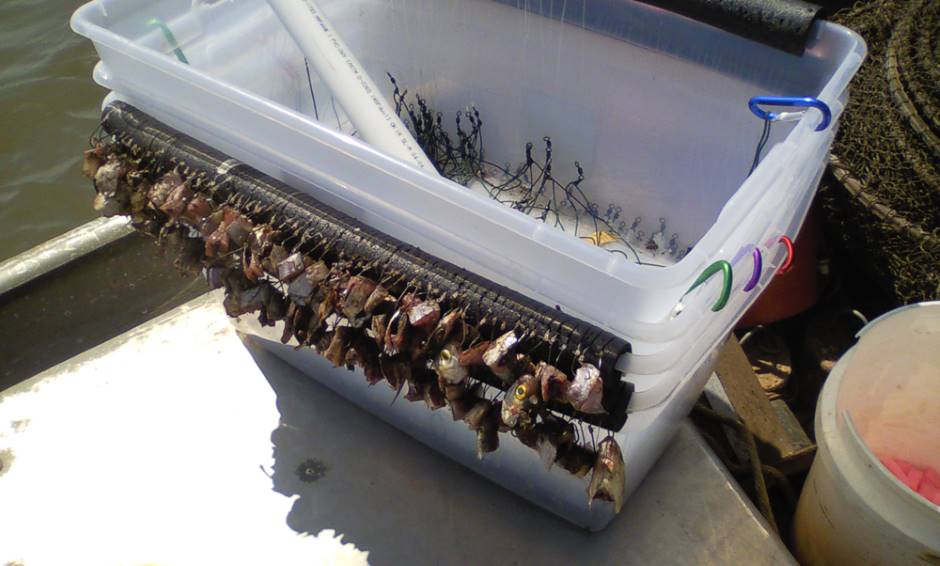Laundry soap-baited trotlines may be answer to turtle-killing catfish nets
The most popular gear choice for fisheries biologists looking to capture channel catfish also has a knack for drowning turtles. A recently published study backs a safer and surprising alternative: trotlines baited with laundry soap.
Biologists have increasingly turned to hoop nets when sampling catfish in reservoirs for their ability to capture their target species while excluding others, according to Evan Cartabiano, lead author of the study.
“They became popular because you can catch a whole bunch of catfish — we’re talking about hundreds of catfish here — with relatively few other fish.”
The problem is they also catch turtles just as well, which rarely get the chance to swim away once the nets are emptied.
“Typically turtles that enter a hoop net have a very short life expectancy,” said Cartabiano, a research technician with the South Carolina Department of Natural Resources. “They’re not real good at getting out, so they drown.”
In his experience, one set of nets can kill can as many as a hundred turtles. That can have implications for the turtle population, and it’s also not great for public relations. When people start seeing a bunch of dead turtles floating around a lake, they start to wonder what’s going on.
So in a study performed as part of his master’s degree research with the Oklahoma Cooperative Fish and Wildlife Research Unit, sought out a more turtle-friendly method to sample catfish. He referred back to small study that found researchers could catch catfish and avoid turtles by using trotlines baited with Zote soap, a laundry soap made from coconut oil and tallow.
Cartabiano wondered if the soap could also be used to bait hoop nets to attract catfish while deterring turtles. He and his colleagues set up a study Lake McMurtry outside of Stillwater, Oklahoma to test hoop nets and trotlines baited with Zote and traditional baits. The trotlines cut cut shad and soap, while the hoop nets got waste cheese byproduct and soap.
“Doesn’t it sound absolutely delightful? Makes you want to eat catfish, right?” Cartabiano said.
The results showed that hoop nets baited with Zote soap attracted just as many turtles as those baited with cheese, suggesting soap isn’t the answer to keeping turtles of hoop nets. But the trotlines baited with soap caught no turtles, and statistics also showed this method to be the most effective for sampling catfish, requiring the least amount of samples to get an estimate of the population.
Trotlines are less popular because it takes more work to bait all the hooks and set up the lines, Cartabiano said. They also have a reputation for only catching larger catfish, which is a problem for researchers looking for a representative sample of the population, including younger fish. But that also could be a result of using one, usually large, hook size, he said.
“If you’re only using a size 4/0 hook, you’re not likely to catch a 10-inch catfish.”
This study used a variety of hook sizes down to size 4, but still was biased toward larger fish, according to the results published in the Journal of Freshwater Ecology. A closer look and trotline hook sizes, and more similar studies performed across a wider geographic range, could help establish soaped up trotlines as a viable alternative to hoop nets where turtle bycatch is a big problem.


0 comments